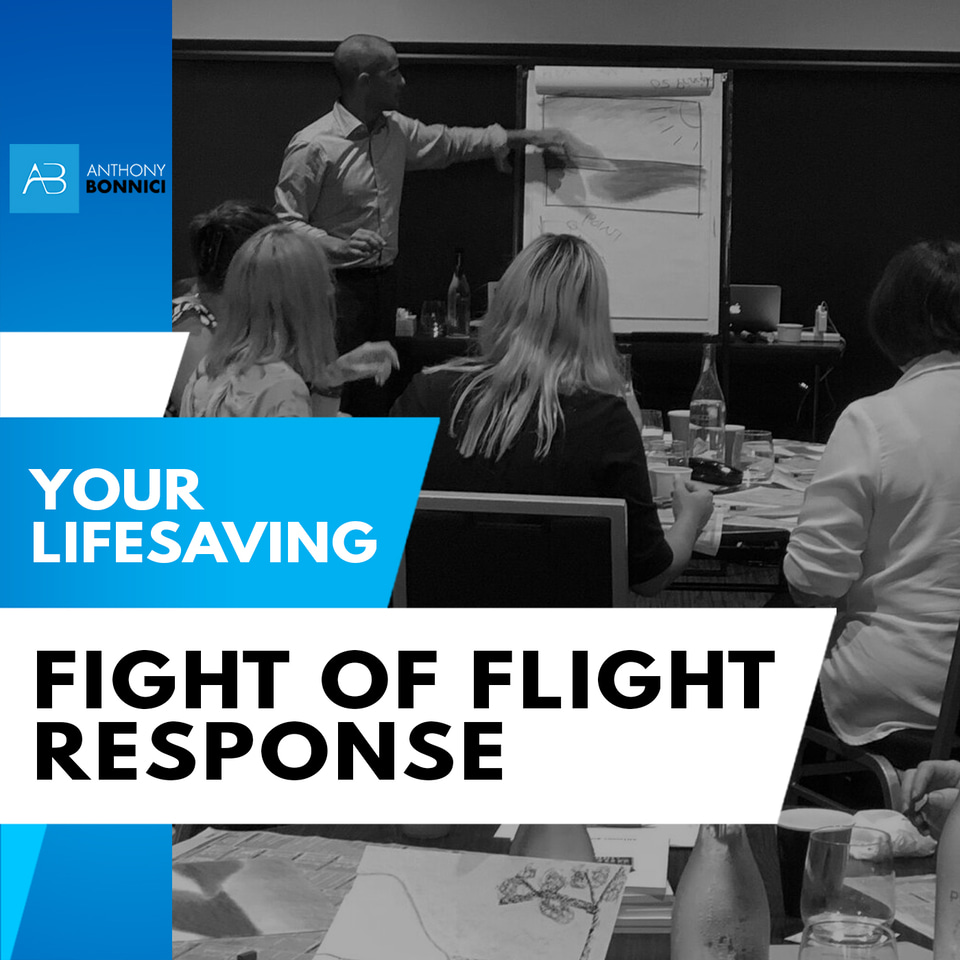We’ve all been there—that wonderful fight and flight response. It’s when the brain perceives danger. The danger doesn’t have to be real; it can be just perceived. So crossing a road and a car coming over, that’s a real danger or it can be the thought of a whole day of work ahead of us or an exam ahead of us.
Whatever that perceived fear is, it has the same response in our brain as it did 200,000 years ago when we stumbled across a sabre-toothed tiger that was going to eat us. The brain sends out a message down to the adrenal glands at the back of the kidneys to squirt this wonderful hormone called adrenaline into our blood to make us fight or flight.
It turns off our brain cognition so we don’t think anymore. That’s why if you’re a nervous presenter, you quite often lose your way in front of people remember this from the program. Just remember: the fight or flight response is there to save your life. It’s just that today, we wear it as stress, overwhelm, fear of failure, fear of not knowing what we’re going to be doing next. So our modern world has made this very primal reaction—something very real still very real today– but something we need to manage.
What we’re going to come up with within the next two videos–you might remember from the Brain Blinkers program— are two ways to treat that; to help manage that adrenal response so that you can perform at your best. So remember the fight and flight response is there to save your life.
Just don’t overdo it.
Cheers


